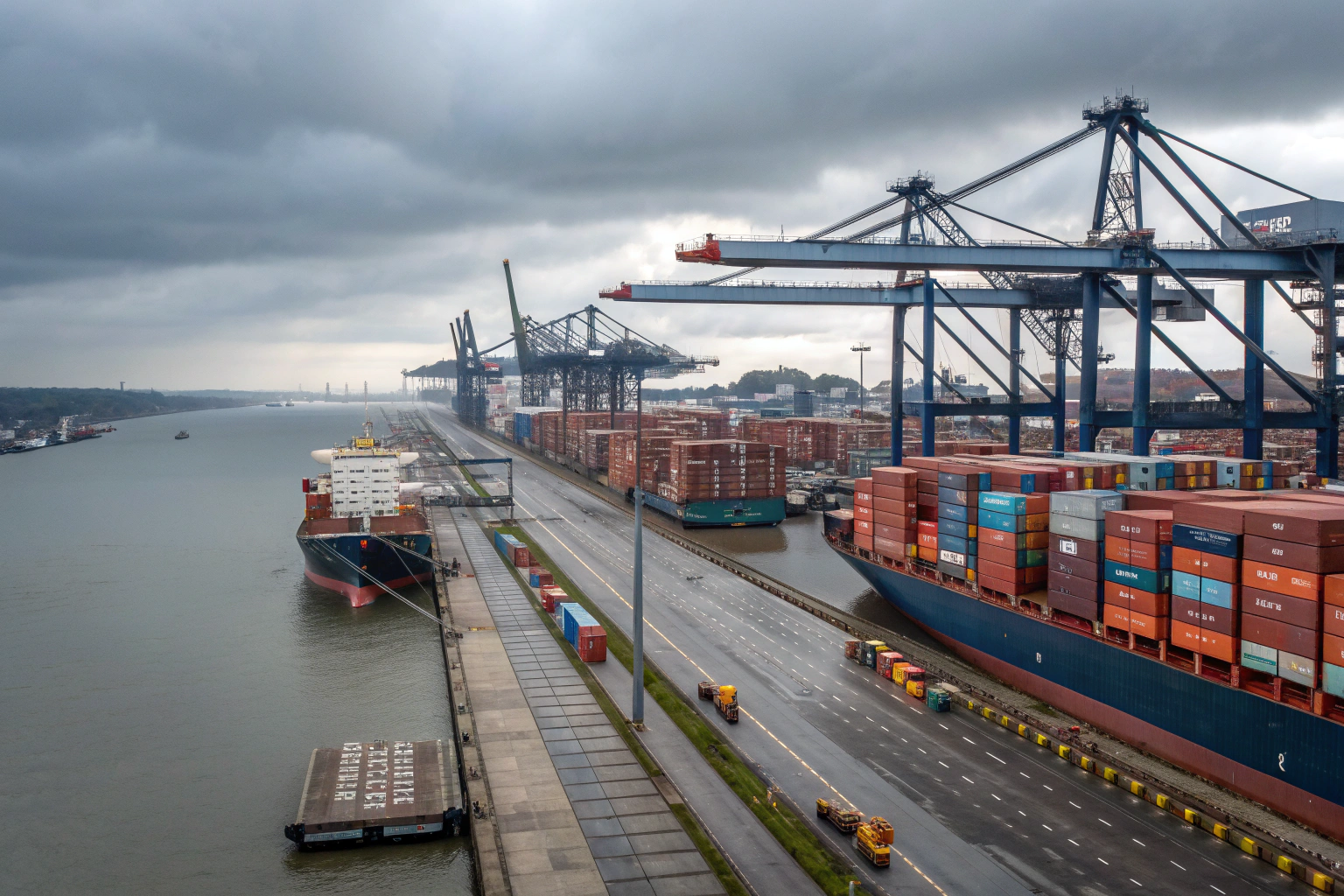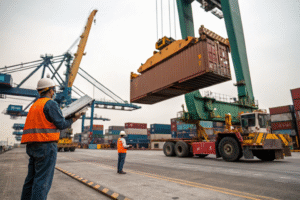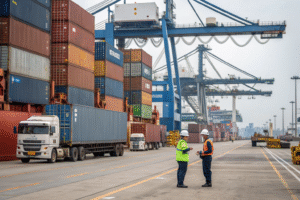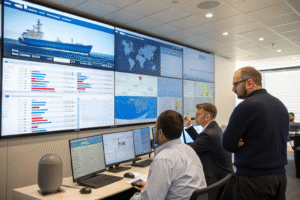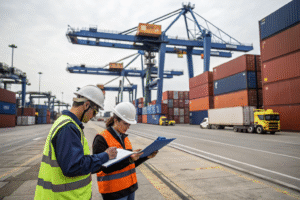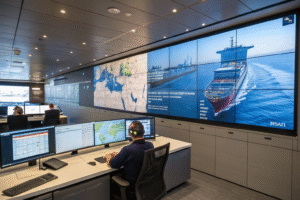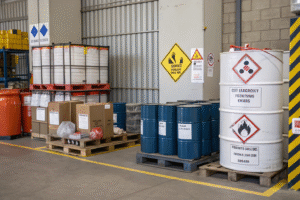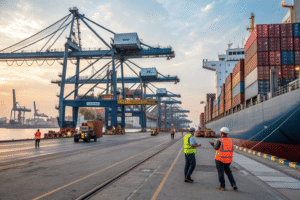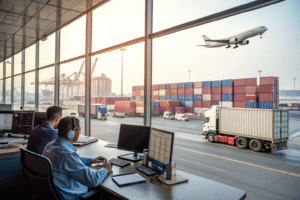Container shipping is the foundation of modern global trade. Over 90% of international goods are moved in containers, making it one of the most efficient and standardized systems ever developed. For importers sourcing from China to the U.S. or Europe, understanding how container shipping works is essential to managing costs, avoiding delays, and building resilient supply chains.
Container shipping operates through a standardized process in which goods are packed into containers, transported on vessels, managed through ports and customs, and finally delivered inland to buyers.
From my academic background in supply chain management and professional experience as a freight forwarder, I have seen how containerization represents both a theoretical model of efficiency and a practical system of global logistics. Let’s examine the process step by step.
What is the role of containers in global shipping?
The introduction of standardized shipping containers in the 1950s transformed global trade. Before that, cargo was shipped in loose sacks and crates, which was inefficient and risky.
Standard containers protect goods, simplify loading and unloading, and make intermodal transport possible.
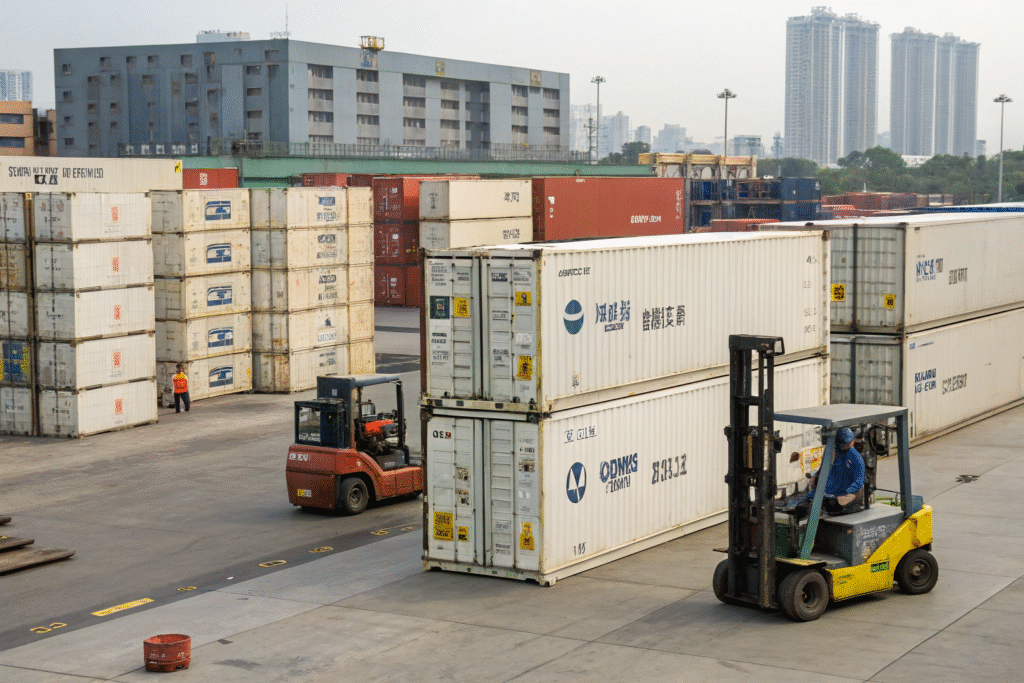
Why are standardized sizes important?
The International Organization for Standardization (ISO) defines global container dimensions. This allows containers to move seamlessly between ships, trucks, and trains without repacking.
What types of containers exist?
There are dry containers for general goods, reefers for temperature-sensitive cargo, and flat-racks for oversized items. Maersk offers detailed guides to container types. Selecting the right container is both a practical and academic exercise in logistics optimization.
How are containers shipped across oceans?
Once packed, containers are transported on ultra-large container vessels. These ships can carry over 20,000 TEUs (Twenty-foot Equivalent Units), making them the backbone of international commerce.
Container vessels follow fixed schedules across major global trade lanes.
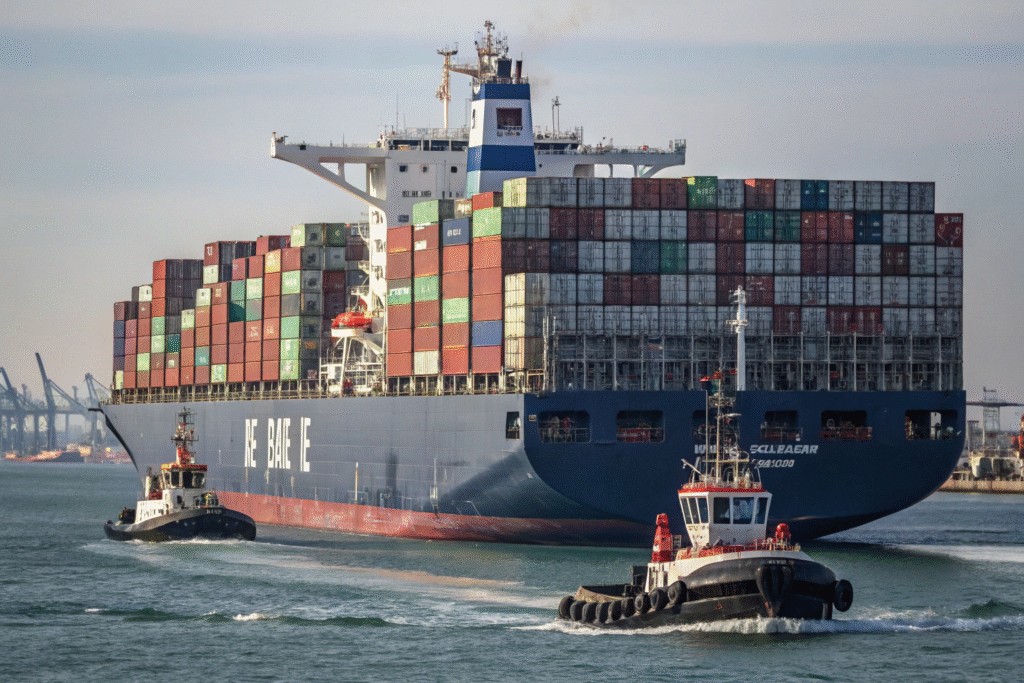
Why are shipping routes important?
The Trans-Pacific route connects Chinese factories with U.S. ports. Routes are selected based on cost, distance, and infrastructure. In academic terms, this reflects network optimization models used in supply chain planning.
How do carriers manage capacity?
Shipping lines such as CMA CGM and MSC adjust schedules and vessel sizes to balance demand and supply. This capacity planning mirrors theoretical frameworks in operations research, applied daily by logistics professionals.
What role do ports and terminals play?
Ports act as the nodes where sea transport connects with land transport. They are responsible for unloading ships, storing containers, and ensuring smooth transfers to rail or trucking systems.
Ports are both logistical hubs and regulatory checkpoints.
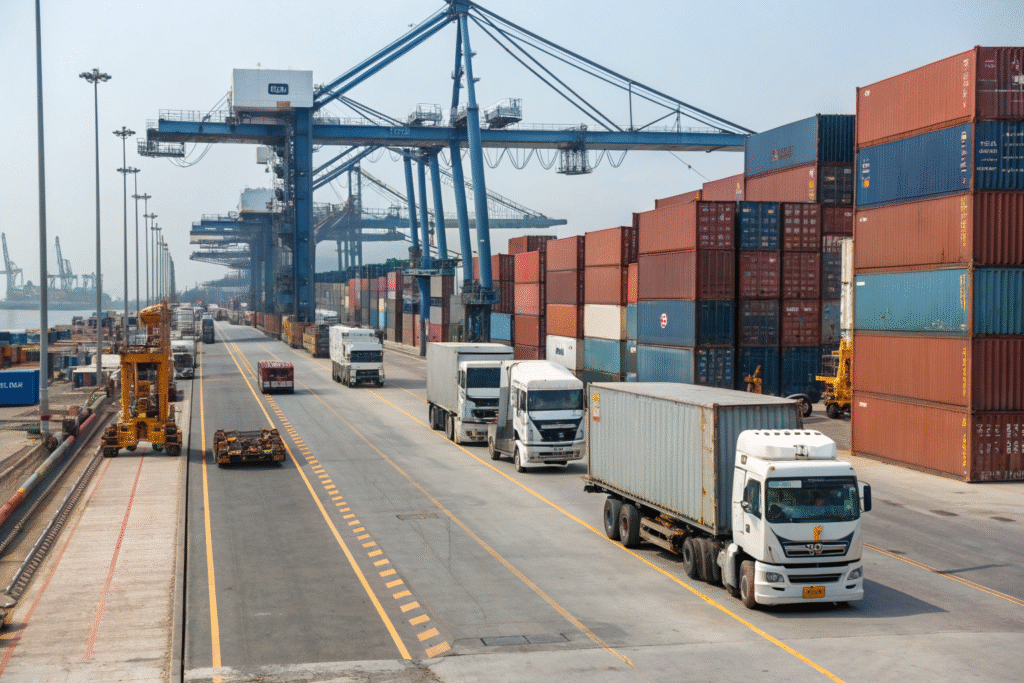
Why is port efficiency critical?
Delays at ports can paralyze supply chains. The Port of Los Angeles experienced severe congestion in 2021, highlighting how bottlenecks disrupt global trade.
How do ports use technology?
Modern ports apply automation and digitalization. The Port of Rotterdam uses driverless vehicles and automated cranes. In academic terms, this is an application of Industry 4.0 in logistics operations.
How do customs and final delivery work?
After arrival, containers must clear customs before release. This step ensures compliance with international regulations and accurate application of duties.
Customs clearance is where documentation and legal compliance become most critical.
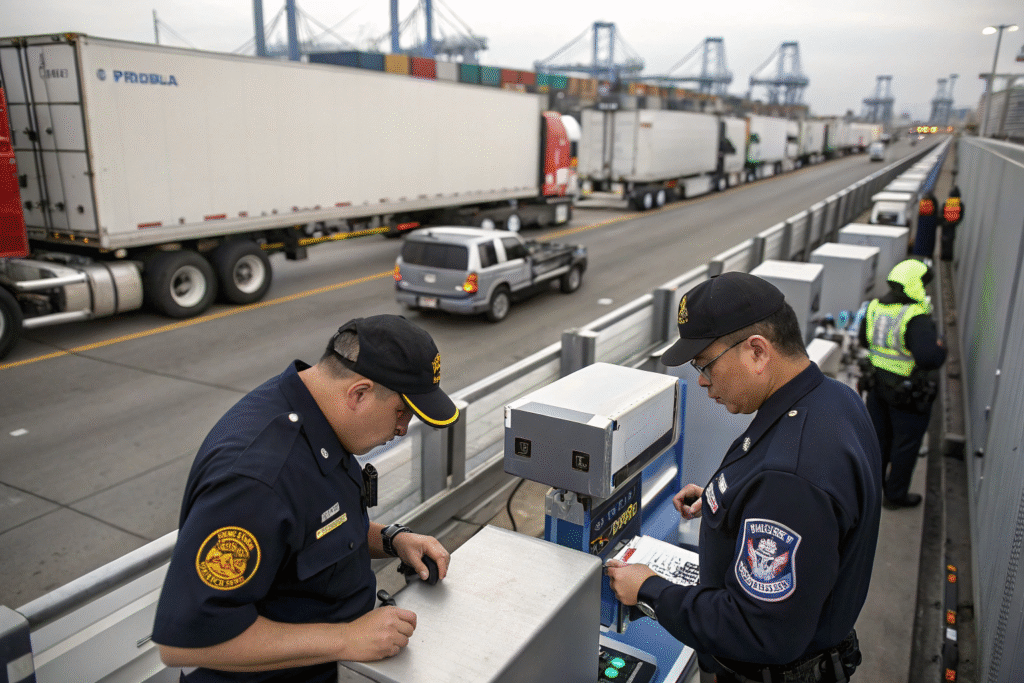
Why is customs clearance complex?
The World Customs Organization governs the Harmonized System (HS Codes) that classify goods. Errors in classification can trigger fines or shipment holds.
How do containers reach the buyer?
Once cleared, containers move inland by rail or truck to warehouses or distribution centers. Companies like Kuehne+Nagel specialize in door-to-door delivery. Academically, this is part of last-mile logistics, which is increasingly studied as a competitive factor in supply chains.
Conclusion
Container shipping works through a global system of standardization, coordination, and compliance. From ISO container sizes to WCO customs rules, it reflects both academic theories of efficiency and the professional practices of freight forwarders.
For businesses sourcing from China, understanding this system is more than operational knowledge—it is a strategic tool. With the guidance of experienced freight forwarders, container shipping becomes a predictable, efficient, and cost-controlled process that strengthens global supply chains.
